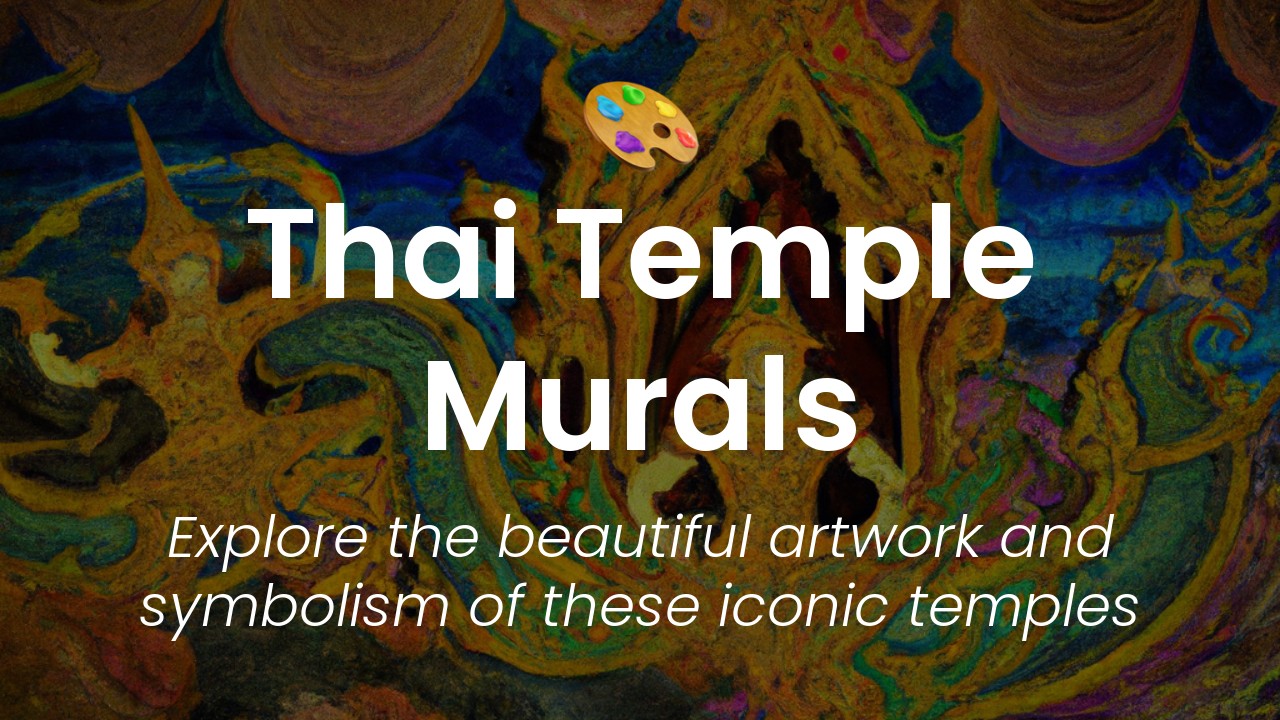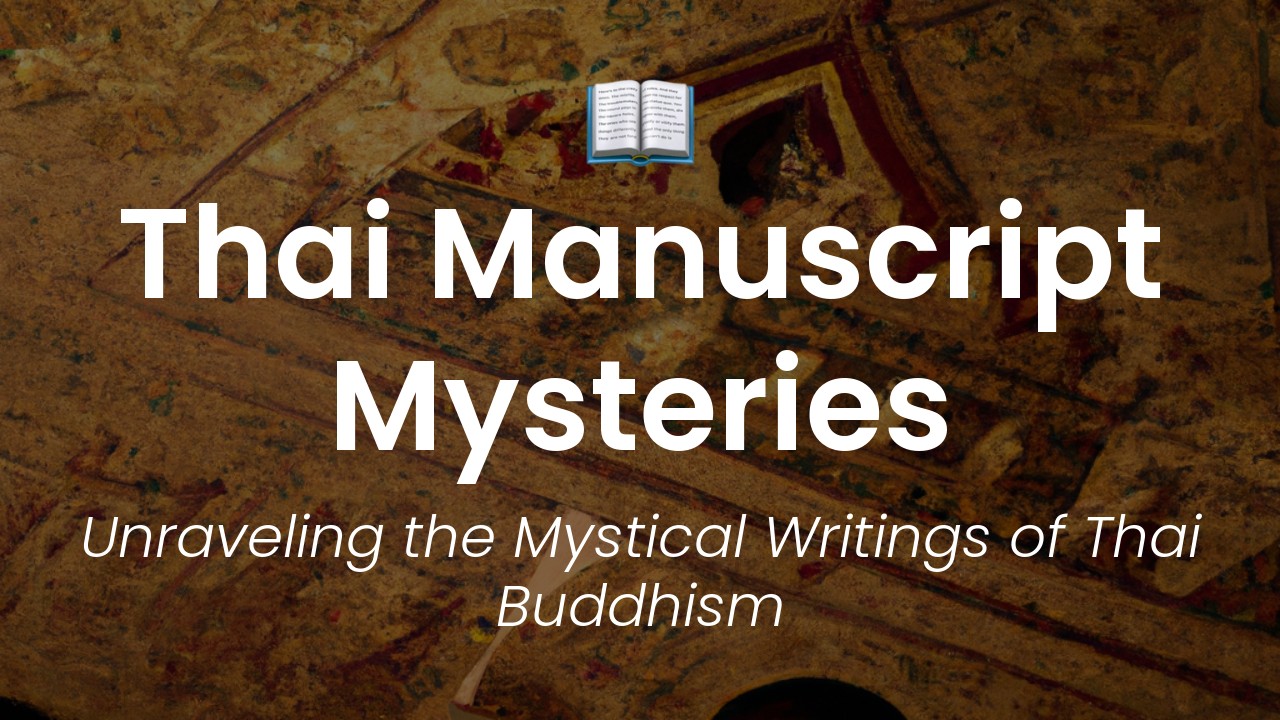Hello, all travel enthusiasts and culture lovers! It's Sirinya, and I am back with another exciting article for you. Today, I want to take you on a journey to discover one of the most mystical and intricate art styles of Thailand – Lanna Buddhist Style.
Lanna is an ancient kingdom situated in the Northern region of Thailand, and it existed from the 13th to the 18th century. It was one of the most culturally rich kingdoms that had a distinct culture, tradition, and even its own unique style of art. Lanna's art is heavily influenced by Buddhism, and this influence is evident in its art forms.
The Lanna style is famous for its intricate and detailed patterns and its use of vibrant hues of gold, red, yellow, and black. It is known for its depictions of nature, mythological characters, and motifs that have significant importance in the Buddhist religion. It is a style that speaks to the soul and leaves you in awe of its sheer beauty.
In this article, I want to take you on a journey through the mystical Lanna Buddhist art style in Thailand. I will share with you the history and symbolism behind this beautiful art form, and together we will explore some of the most significant Lanna art pieces that are still present in the Northern regions of Thailand today. So grab a cup of tea and join me on this journey to discover the beauty of Lanna Buddhist art in Thailand.
Origins of Lanna Buddhist Art
Thailand is a melting pot of cultures, and each of its regions has its distinct art and cultural practices. Lanna is an umbrella term used to describe the cultural landscape of northern Thailand, which existed between the 13th and 18th centuries. Lanna Art is a unique and mystical Buddhist art style that evolved in the Lanna Kingdom and is characterized by its intricate patterns, bold colors, and sacred symbolism. In this blog post, we'll discover the origins, characteristics, and techniques of Lanna Buddhist Art and explore the magnificent art pieces that have survived to this day.
Lanna Buddhist Art is a fusion of Theravada Buddhism and the indigenous animistic practices of the northern Thai tribes. Lanna Art is a combination of Pali and Sangha traditions along with local beliefs and practices. The Lanna Kingdom was one of the most influential Buddhist kingdoms in Southeast Asia, and its Buddhist art and architecture left a significant impact on Thai culture. The Lanna Kingdom was the birthplace of the Northern Thai style – a style that flourished in the Northern provinces of Thailand. Lanna artists' inspiration came from the legends and stories of Buddha, Jataka, and the lives of other famous monks. The Lanna style is also influenced by Khmer art from Cambodia, Indian art, and Chinese Buddhism.
Characteristics of the Lanna Style
Lanna Buddhist Art is characterized by a unique set of features that make it stand out from other Buddhist art styles. Lanna Art is famous for its bright colors, intricate patterns, and detailed artwork. The Lanna style combines the traditional Buddhist iconography with local, naturalist motifs like leaves, flowers, and birds. The Lanna style's color palette is dominated by striking neon hues like fuchsia and green, giving it an otherworldly, mystical quality.
Another distinguishing feature of Lanna Art is its use of gold and silver leaf. Lanna artists were masters of metalwork and used gold and silver leaves to embellish their art pieces. The art pieces are further adorned with intricate patterns and depictions of Buddhist deities and legends. Lanna Buddhist sculptures often depict Buddha and other divine beings in a very classically ornate style that sets them apart from other Buddhist art forms in Thailand.
Popular Lanna Buddhist Art Pieces
Lanna Buddhist Art has produced some of the most beautiful and intricate art pieces in Thailand. The Wat Phra Singh in Chiang Mai is famous for its intricate Lanna-style murals that depict the life of Buddha and the teachings of Theravada Buddhism. Another must-visit destination is the Wat Pongsanuk Temple in Lampang, which houses beautiful Lanna-style Buddha statues and wall murals. These art pieces represent Lanna Art's signature style – the incorporation of local naturalistic motifs into traditional Buddhist iconography.
The Phra Chao Mahachedi Chai Mongkhon in Chiang Saen and Wat Pa Sak in Lampang are two of the most significant and well-preserved Lanna-style temples in Thailand. The temples house towering Lanna-style stupas that are adorned with intricate gold leaf designs and carvings of local flora and fauna. The stupas are surrounded by beautiful gardens that further add to the transcendental atmosphere of the temples.
Lanna Art Techniques & Materials
The Lanna style uses a range of unique techniques and materials to create its distinguished art pieces. Lanna artists primarily used teakwood to carve Buddha images and other sculptures. The sculptures were then coated with gold and silver leaf or painted with bright, bold colors. Lanna artists also specialized in woodworking techniques such as carving and inlaid work, which they used to create intricate patterns and motifs. A unique style of Lanna Art involves the use of eggshells to make patterns on the artwork, which would then be coated with sparkling gold leaf to make it even more striking.
In terms of painting, Lanna artists used natural pigments made from minerals and plants. They would also use glazed tiles to create colorful murals that would last for centuries. A unique form of Lanna painting involves a technique called "Lai Thai," where gold leaf is used to create geometrical shapes and floral patterns on black lacquer.
Lanna Art Influence on Thai Culture
Lanna Art has influenced Thai culture in many ways. The elaborate Lanna-style architecture can be seen in temples and other buildings throughout Thailand. Lanna Art's intricate patterns and designs are also present in many Thai textiles, including silk fabrics, tablecloths, and bedspreads. Lanna Art's influence is also prominent in Thai cuisine. The use of local herbs and spices to flavor Thai cuisine is a testament to the Lanna people's ancient knowledge of the healing properties of plants. The ingredients used in Thai cuisine's most popular dishes can be traced back to the Lanna Kingdom.
Where to See Lanna Art in Thailand
If you're interested in seeing Lanna Art for yourself, there are many places you can visit in Thailand. The Wat Phra Singh and Wat Pongsanuk Temples, mentioned earlier, are two of the best places to see Lanna-style architecture and artwork up close. The city of Chiang Mai is also home to many Lanna-style galleries and art studios that specialize in Lanna Art. The city of Lampang in Northern Thailand is another destination worth visiting if you want to see well-preserved examples of Lanna architecture and art.
Preserving Lanna Art for Future Generations
Lanna Art is an important cultural artifact that needs to be preserved for future generations. Unfortunately, many Lanna Art pieces have not been well-preserved, and some have even been lost. Over time, cultural and artistic standards have shifted, and Lanna Art is at risk of being forgotten. It is essential to take active measures to protect and promote Lanna Art to ensure its survival.
One way to preserve Lanna Art is to promote and support the artists and artisans who practice this art form. Currently, many organizations and galleries in Thailand are working to preserve and promote Lanna Art. These institutions provide support to the artists and help them gain recognition for their work.
Another way to raise awareness of Lanna Art is to educate people about it. This can be achieved by promoting Lanna Art in schools and universities, organizing cultural tours that highlight Lanna Art's significance, and publishing books and articles on Lanna Art.
In conclusion, Lanna Buddhist Art is a unique and mystical art style that has its roots in the Northern Thai tribes and is characterized by its intricate patterns, bold colors, and sacred symbolism. Lanna Art has had a significant influence on Thai culture and can be seen in many aspects of Thai life, including art, architecture, textiles, and cuisine. To appreciate Lanna Art, one must study its history, techniques, and aesthetics. By promoting and preserving Lanna Art, we can ensure its survival for future generations.





